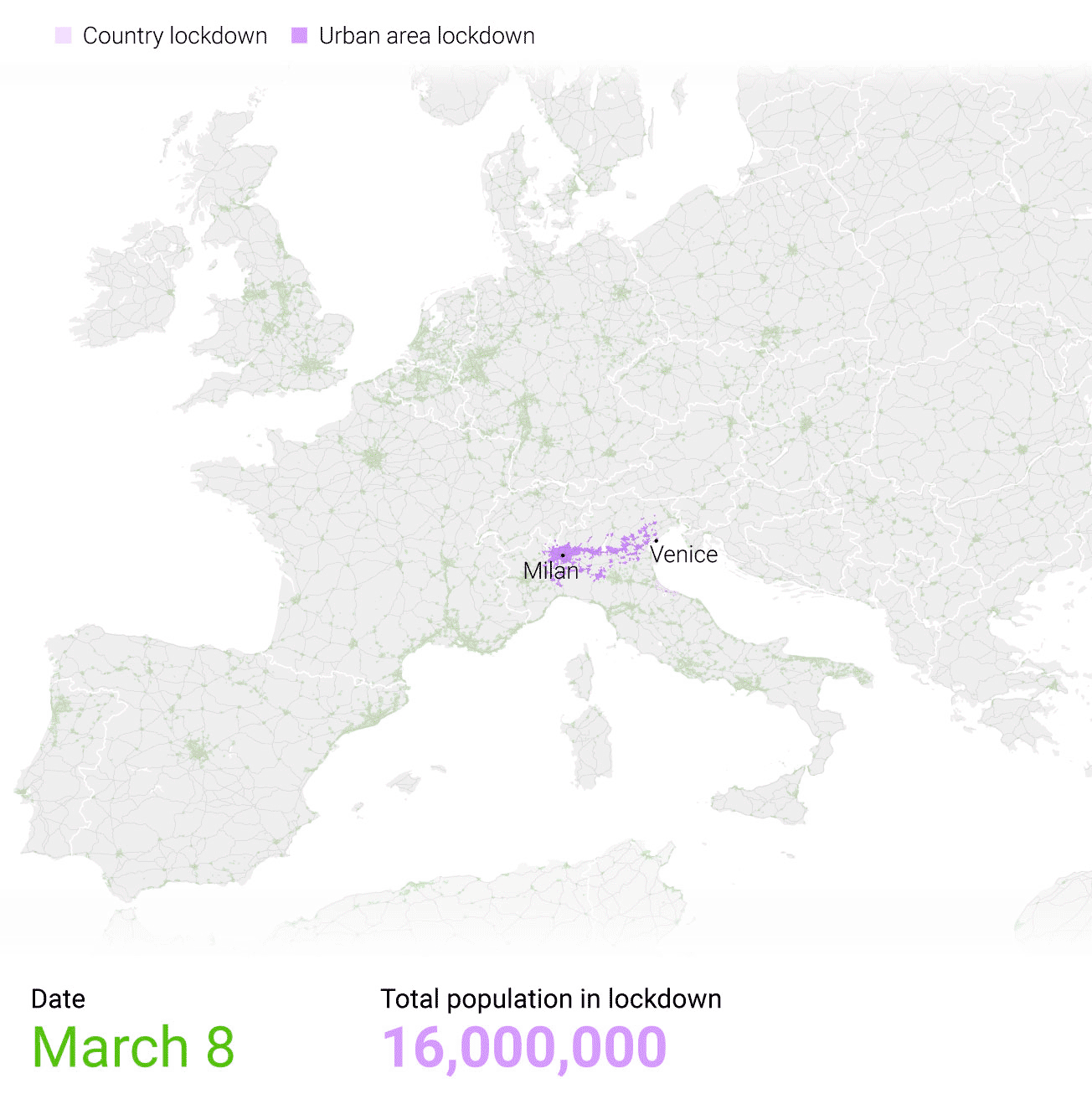China has a grid-like community control system, which may have helped slow the spread of the coronavirus. Besides reporting activities in neighbourhoods to the authorities, the grid system has workers available to provide community assistance to those in need.
Like Europe, China seemed to fumble at the initial outbreak. Wuhan authorities at ground zero initially failed to report cases of the mystery illness, which cost time and lives. The city’s early response was to silence whistle-blowers like the late Dr Li Wenliang and clamp down on social media to control information.
But once China did mobilise, it imposed unprecedented measures. Movement in and out of Wuhan was halted, and the city, along with 15 others in Hubei province – home to more than 60 million people – went into lockdown. Flights and train travel was suspended and roads were blocked.
The logistics of isolating millions of people are staggering. Here, we look at how the grid system was instrumental in China’s lockdown effort.
Wuhan confirmed cases
China does not include asymptomatic cases in their tally
How Wuhan is fighting the virus during lockdown
The China National Grid project is a community management programme first trialled in Beijing’s Dongcheng district in 2004 before large-scale adoption. Introduced as an efficient local management process, the system divides cities into grids, or zones, by blocks and communities.
Each grid is assigned grid controllers as social managers, who are responsible for reporting their area’s resident size to the local government. They also monitor all social organisations and activities in their assigned neighbourhoods, as well as provide help to elderly empty-nest residents and people with disabilities.
How Chinese regions divide from province to grid level
According to Xinhua, there are 13,000 grids and 8,700 grid workers in Wuhan, with each worker managing 300 to 500 households. During the outbreak, many volunteers joined to help them buy food, medicine and other essential items.
The grid system has been in place for several years, but anecdotal evidence suggests it was never taken particularly seriously until the coronavirus outbreak. The system is now running at full speed, and on February 11, Wuhan’s headquarters for epidemic prevention and control ordered all residential areas to restrict the movements of people who live there.
Grid workers also collected health data from households, such as the body temperature of residents, sometimes through WeChat groups.
A grid worker’s precautionary duties during lockdown
Europe’s response to the coronavirus outbreak
While the virus raged in China and spread across Asia, Europe seemed to watch on as if convinced of its own immunity. Barely any restrictions were imposed in Italy after the first cases were recorded in Rome and it was not until the number of confirmed cases exploded in Italy’s Lombardy and Emilia-Romagna regions that Europe began to wake up. Until then the territory continued to allow unfettered movement of people between regions and international travel. But when Italy eventually decided to put the country into lockdown mode, much of Europe began to follow suit.
Lockdown in Europe

* The definition here of lockdown is based on a country imposing measures to mitigate the spread of coronavirus. That includes curtailing freedom of movement; closure of schools, libraries and public buildings; closing borders; declaration of a state of emergency; etc
European timeline, cumulative cases
Mortality rate: Europe vs China
The mortality rate is the number of deaths from a particular cause. It is determined here by data made available from official sources, and doesn’t include suspected cases. The data, though imperfect, can give some idea about the severity of an outbreak in a country.
Mortality rate compared
Lombardy — The other ground zero
Italy has an alarmingly high mortality rate of 9 per cent, much higher than the rest of the world. This might be due to the fact that Northern Italy’s population is the oldest in Europe and considerably older than the people of Hubei. The average mean age in Italy is 45.7 years old, and about 22 per cent of the population is aged over 65, some 14 million people. It is perhaps little wonder that Italy has such a high mortality rate for a virus known to be 14 per cent more likely to result in a fatality if the patient is aged over 80. Further compounding the situation is the fact that a “strange pneumonia” was circulating in northern Italy, the country’s industrial powerhouse and home to migrant workers, as long ago as November, weeks before doctors were made aware of the novel coronavirus outbreak in China.
Population by age: Lombardy vs Wuhan
The first official cases of the Covid-19 outbreak in Italy occurred in Rome on January 31, where two Chinese tourists tested positive, and 21 days later the death toll in Italy exceeded all deaths in China since the start of the outbreak at the end of December 2019.
Deaths in Italy compared with China (numbers day-by-day)
Distribution of confirmed cases in Italy (by sex and age)
Age of death from Covid-19 in Italy
Total 6,798 deaths as of March 26